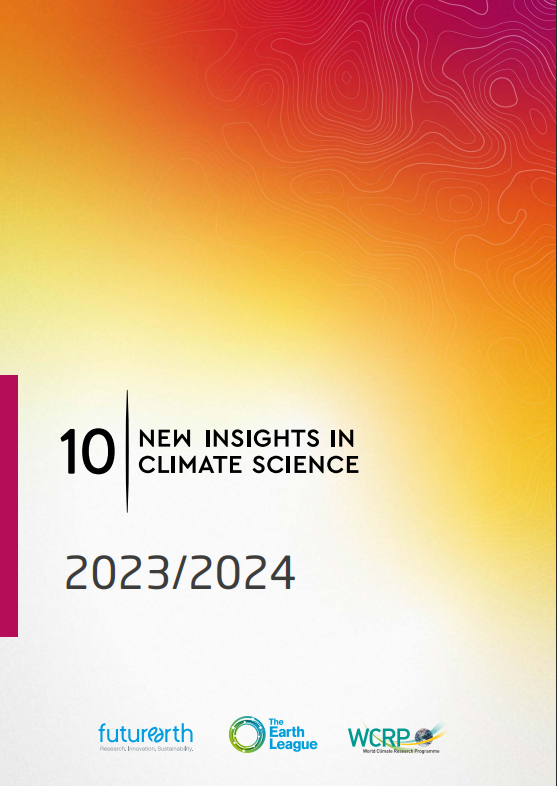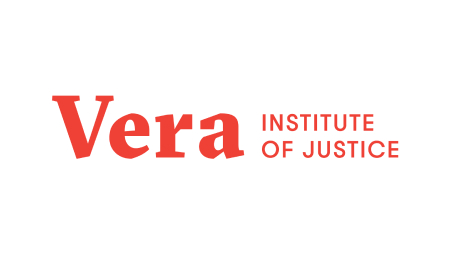Aims to synthesise the most pressing findings in climate research for policymakers and society. Covering the scientific evidence published between January 2022 and June 2023, it focuses on ten key insights related to the climate crisis and its solutions. 10 New Insights in Climate Science 2023/2024 calls for urgent and transformative action to limit global warming as close to 1.5°C as possible, to minimize the overshoot and its impacts, to phase out fossil fuels and scale up renewable energy, to support adaptation and preparedness for compound events and immobility, to align climate and biodiversity goals and finance, and to ensure justice and equity in climate solutions.
1- Overshooting 1.5°C is fast becoming inevitable. Minimizing the magnitude and duration of overshoot is essential
Underscores the growing inevitability of exceeding 1.5°C global warming and the increased risks and uncertainty this will bring. It emphasizes the rapidly diminishing carbon budget and the necessity for a managed and fair phase-out of fossil fuels to lower carbon emissions and combat global warming. Further, the report highlights the significance of understanding carbon dioxide removal (CDR) in achieving long-term temperature goals while discussing challenges in deploying CDR methods on a large scale, accounting, and governance. Further, it emphasizes the need to urgently decarbonize the global economy and be realistic about the role of CDR methods to prevent sustained overshooting and maintain peak warming as close to 1.5°C as possible.
Key takeaways:
- Overshooting 1.5°C warming: Unless radical transformations are implemented soon, the world is not on track to limit global warming to 1.5°C and will likely exceed it for some decades.
- Risks and impacts of overshoot: The magnitude and duration of the overshoot will determine the severity and irreversibility of climate impacts, such as biodiversity loss, sea-level rise, and tipping points.
- Minimizing overshoot: To avoid or reduce overshoot, governments and actors must urgently implement strong mitigation measures, such as phasing out fossil fuels and scaling up carbon dioxide removal.
- Policy implications: Governments should strive to limit warming as close to 1.5°C as possible by closing the emission gap, accelerating the energy transition, and supporting net-negative emissions.
2- A rapid and managed fossil fuel phase-out is required to stay within the Paris Agreement target range
Highlights the urgent need for a managed and equitable fossil-fuel phase-out to lower carbon emissions and lessen global warming. It emphasizes the necessity of unequivocal steps towards solid commitments for a managed phase-out of all fossil fuels. This recognition acknowledges the risks of prolonged overshoot, uncertainties regarding the future of natural carbon sinks, and persisting challenges in realizing the complementary role of carbon dioxide removal (CDR). Also accentuates the importance of just transitions in low- and middle-income countries and the need for climate financing to support these transitions. Additionally, it highlights the necessity of minimizing socio-economic impacts on the most vulnerable sections of society. An immediate, transformative action to rapidly decarbonize the economy, energy, and land-use systems is also stressed to cut emissions by 43% by 2030 relative to 2019 levels.
Key takeaways:
- Rapid fossil fuel phase-out: To stay within the Paris Agreement target range, a rapid and managed phase-out of fossil fuels is required.
- Mitigation strategies: This includes reducing demand for fossil fuels, increasing energy efficiency, and scaling up renewable energy.
- Role of governments and actors: Governments and actors must implement strong mitigation measures, such as phasing out subsidies for fossil fuels and investing in renewable energy technologies.
- Policy implications: Policies should accelerate the energy transition, support just transition for workers and communities, and align with sustainable development goals.
3- Robust policies are critical to attain the scale needed for effective carbon dioxide removal (CDR)
Underlines robust policies’ crucial role in achieving the scale necessary for effective carbon dioxide removal (CDR). Although CDR is not a substitute for swift and significant emissions reductions, it is essential for addressing hard-to-eliminate emissions and reducing global temperatures. It underlinesthe prevalence of forest-based CDR and the immediate need for the speedy acceleration and large-scale deployment of other CDR methods that permanently remove CO₂. Ensuring the effectiveness of CDR in mitigating climate change requires enhanced governance and improved monitoring.
Key takeaways:
- Effective Carbon Dioxide Removal (CDR): Robust policies are critical to attaining the scale needed for effective carbon dioxide removal.
- CDR strategies: This includes enhancing natural sinks, such as forests and soils, and developing and deploying technological solutions, such as direct air capture and storage.
- Role of governments and actors: Governments and actors must implement strong mitigation measures, such as setting clear targets and standards for CDR, providing financial incentives, and ensuring transparency and accountability.
- Policy implications: Policies should support developing and deploying CDR technologies, ensure sustainability and equity, and align with biodiversity and other environmental goals.
4- Over-reliance on natural carbon sinks is a risky strategy: their future contribution is uncertain
Stresses the significant uncertainties about how much global warming negatively impacts natural carbon sinks, such as forests and oceans. It also discusses the potential implications for carbon dioxide removal (CDR) efforts. The report highlights the need for further research to understand the complex interactions between climate change and natural carbon sinks and the potential feedback loops that could exacerbate global warming. Moreover, it underscores the importance of diversifying CDR methods to reduce dependence on forest-based CDR, which holds risks due to uncertainties and potential impacts on forests caused by climate change. It emphasizes the need for various CDR options to adapt to technological progress, risk assessment, and changing environmental, societal, economic, and political demands.
Key takeaways:
- Over-reliance on natural carbon sinks: Over-reliance on natural carbon sinks is risky as their future contribution is uncertain due to climate change, land-use change, and other factors.
- Natural carbon sinks: These include forests, soils, and oceans, which absorb and store atmospheric carbon dioxide.
- Role of governments and actors: Governments and actors must implement strong mitigation measures, such as protecting and restoring natural sinks, reducing emissions, and enhancing carbon storage.
- Policy implications: Policies should aim to maintain and enhance the capacity of natural sinks, ensure their sustainability and resilience, and align with biodiversity and other environmental goals.
5- Joint governance is necessary to address the interlinked climate and biodiversity emergencies
Focuses on the effects of climate change on oceans and coastal regions. The section emphasizes the profound impacts on marine ecosystems, including ocean acidification, warming, and deoxygenation. It observes that these effects significantly impact marine biodiversity, fisheries, and coastal communities. Also underscores the need to address the primary causes of the ocean and coastal degradation, such as overfishing, pollution, and habitat destruction. The report advocates for a more comprehensive and integrated approach to ocean and coastal management, considering these systems’ intertwined social, economic, and ecological aspects. Concludes by stressing the urgent need to reduce greenhouse gas emissions and take immediate action to mitigate the effects of climate change on the world’s oceans and coastal regions.
Key takeaways:
- Interlinked crises: Climate and biodiversity are deeply intertwined, and so should be the processes and institutions for managing and governing them.
- Rising rates of change: Both global mean temperature and biodiversity loss are changing faster than ever before in human history and pose severe risks for humans and ecosystems.
- Synergies and trade-offs: Nature-based solutions can reduce climate change impacts and help restore biodiversity. Still, they must be well-designed and implemented with safeguards to avoid harm and ensure multiple benefits.
- Policy alignment: The international climate change and biodiversity conventions need better alignment and collaboration, such as ensuring climate finance has nature-positive safeguards.
6- Compound events amplify climate risks and increase their uncertainty
Indicates the scientific comprehension of “compound events” within the climate change context. It highlights the increasing frequency and severity of these events, which involve multiple climate-related hazards occurring simultaneously or successively, resulting in amplified impacts. The report underscores the need for extensive research, risk assessment, and modelling to understand better and manage these events, which present significant challenges for adaptation planning and risk management. Furthermore, the urgency to address compound events is emphasized, especially considering their considerable effects on food and water security. This insight underscores the need to develop resilience-building strategies and adapt to compound events amidst growing climate risks.
Key takeaways:
- Compound events amplify climate risks: Compound events, which are combinations of multiple extreme weather events or conditions, can amplify the impacts and uncertainties of climate risks.
- Understanding compound events: These events are complex and challenging to understand and predict due to their interactions and dependencies.
- Role of governments and actors: Governments and actors must implement strong adaptation measures, such as improving forecasting and early warning systems, enhancing resilience and preparedness, and ensuring social protection and insurance.
- Policy implications: Policies should aim to manage and reduce the risks of compound events, ensure their equity and justice, and align with sustainable development goals.
7- Mountain glacier loss is accelerating
Concentrates on the rapid loss of mountain glaciers and its consequences. It emphasizes the need to address this issue due to its significant impact on water resources, sea-level rise, and the environment. The report calls for improved monitoring, research, and international cooperation to understand better and alleviate glacier loss effects. Additionally, it stresses the crucial role of adaptation planning, especially in vulnerable regions, in managing the impact of mountain glacier loss on water and food security. Given the escalating effects of glacier loss on the environment and human societies, the need for mitigation and adaptation efforts is underscored.
Key takeaways:
- Mountain glacier loss is accelerating: This insight discusses the impacts of glacier melt on water availability and quality and the adaptation strategies for different regions and sectors.
- Understanding glacier loss: Mountain glaciers are melting at an unprecedented rate due to climate change, which can lead to changes in river flows, water temperatures, and sediment loads.
- Impacts on water security: The loss of glaciers can affect water security for millions of people, especially in regions that rely on glacier melt for their water supply during dry seasons.
- Adaptation strategies: These include improving water management, investing in water infrastructure, promoting water-saving technologies and practices, and enhancing the resilience of ecosystems and communities.
- Role of governments and actors: Governments and actors must implement strong adaptation measures, such as monitoring glacier changes, assessing risks and vulnerabilities, and planning for future water scarcity.
Policy implications: Policies should aim to manage and reduce the risks of glacier loss, ensure water security for all, and align with sustainable development goals.
8- Human immobility in areas exposed to climate risks is increasing
Illustrates an often overlooked aspect of the intricate relationship between human mobility and climate change. It aims to address immobility in the face of climate risks. It emphasizes the need to understand and confront the challenges faced by communities vulnerable to climate-induced displacement. The report stresses the importance of creating inclusive and participatory processes to assess and address potential relocation from high glacial melt flood risk zones. Highlights the urgent need for comprehensive climate adaptation policies that protect and support communities at risk of displacement due to climate change. It underlines the importance of engaging affected communities in decision-making processes and developing robust procedures for assessing and consulting about potential relocation.
Key takeaways:
- Human immobility in areas exposed to climate risks is increasing: This insight examines the drivers, patterns, and consequences of human mobility in climate change and the policy and governance challenges and opportunities.
- Understanding human immobility: Despite the increasing risks of climate change, many people are unable or unwilling to move away from hazardous areas due to various factors, such as economic constraints, social ties, and lack of alternatives.
- Impacts on vulnerable populations: The immobility of people in areas exposed to climate risks can lead to increased vulnerability and inequality, especially for marginalized and disadvantaged groups.
- Policy and governance responses: These include improving risk assessment and communication, enhancing adaptive capacity and resilience, providing social protection and support, and ensuring the rights and participation of affected communities.
- Role of governments and actors: Governments and actors must implement strong adaptation measures, such as planning for safe and orderly migration, investing in climate-resilient infrastructure, and promoting sustainable and inclusive development.
- Policy implications: Policies should aim to manage and reduce the risks of human immobility, ensure the safety and well-being of all people, and align with human rights and sustainable development goals.
9- New tools to operationalise justice enable more effective climate adaptation
Emphasizes the need for climate action to consider the numerous interlinked sources and impacts of climate change and potential co-benefits. It emphasizes embedding justice in climate adaptation planning and stresses the key role of Locally Led Adaptation (LLA) efforts. Highlights the need for climate adaptation initiatives to be inclusive, participatory, and responsive to local community needs and priorities. It also underscores the importance of addressing social and environmental justice in adaptation planning, especially in vulnerable regions and societal segments. The crucial role of LLA in building resilience and tackling the complex challenges of climate change is further underscored.
Key takeaways:
- Adaptation justice: Ensuring adaptation planning and implementation are fair and equitable for all people and groups affected by climate change.
- Adaptation justice index: A tool to assess the degree of justice in adaptation processes across different scales of social organization and time horizons and identify improvement areas.
- Adaptation rationales: The values and practicalities that guide adaptation priorities, actions, and outcomes. They should be explicit, transparent, and inclusive to avoid maladaptation and promote equality and resilience.
- Locally led adaptation (LLA): An approach that empowers local communities to design and implement adaptation solutions that reflect their needs, preferences, and capacities and foster collaboration and learning across scales.
10- Reforming food systems contributes to just climate action
Spotlights the significance of understanding and addressing the social aspects of climate change adaptation. It urges for a holistic and integrated approach to adaptation that considers social, cultural, and political contexts. The report recommends involving local communities and stakeholders in adaptation planning and decision-making. Emphasizes an inclusive, participatory approach to adaptation that acknowledges different communities and groups’ varying needs and viewpoints. It also highlights the necessity to address inherent social and economic inequalities that heighten vulnerability to climate change impacts. Underscores the need for adaptive governance structures that foster effective collaboration and coordination among all stakeholders and actors involved in adaptation efforts.
Key takeaways:
- Food systems and climate justice: Food systems are a major source of greenhouse gas emissions and a driver of biodiversity loss, but also a sector where climate change impacts are felt most acutely by vulnerable and marginalized groups. Addressing the injustices and power imbalances in food systems governance is essential for effective and equitable climate action.
- Food systems transformation challenges: Transforming food systems for climate mitigation requires acknowledging and addressing the historical and persistent injustices, socio-economic conditions, regional disparities in geography, culture, and technological readiness, and vested interests that shape food production and consumption patterns.
- Food systems transformation opportunities: Transforming food systems for climate mitigation offers opportunities for co-benefits such as enhancing food security, biodiversity conservation, health and well-being, and social justice. Policies must be co-designed with all key actors, with various solutions across scales reflecting diverse regional contexts.




